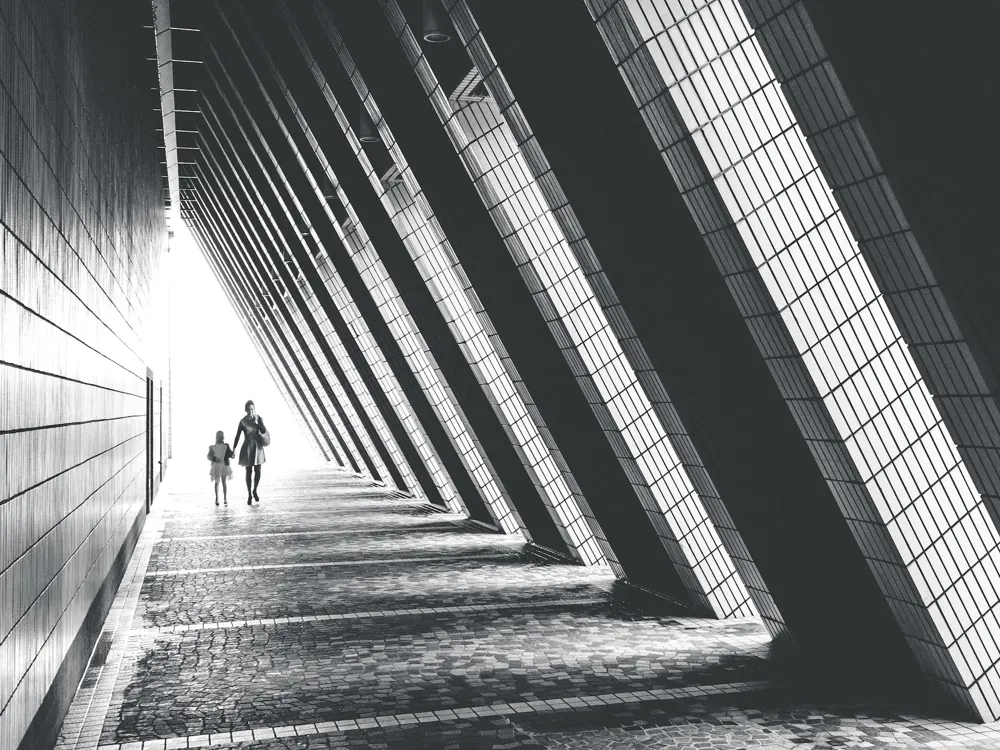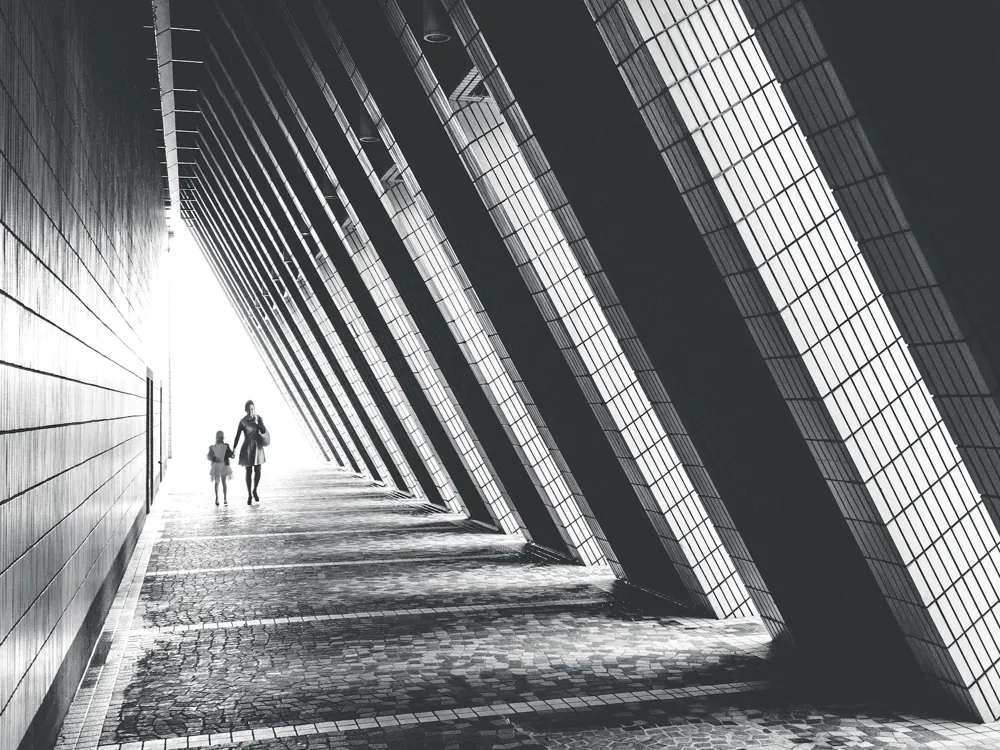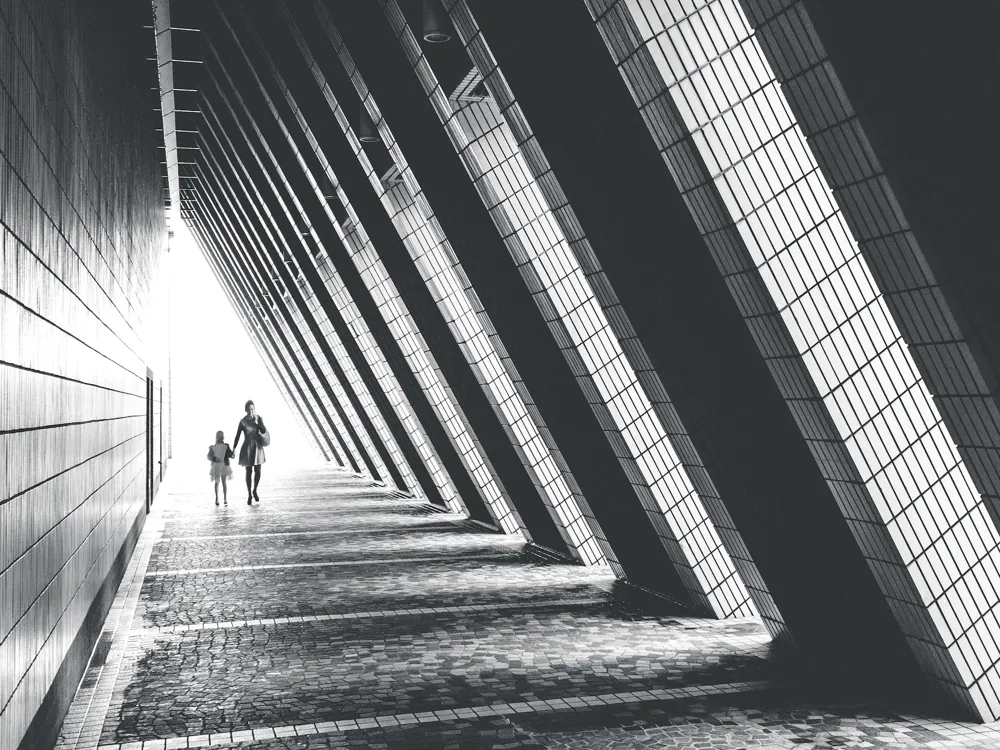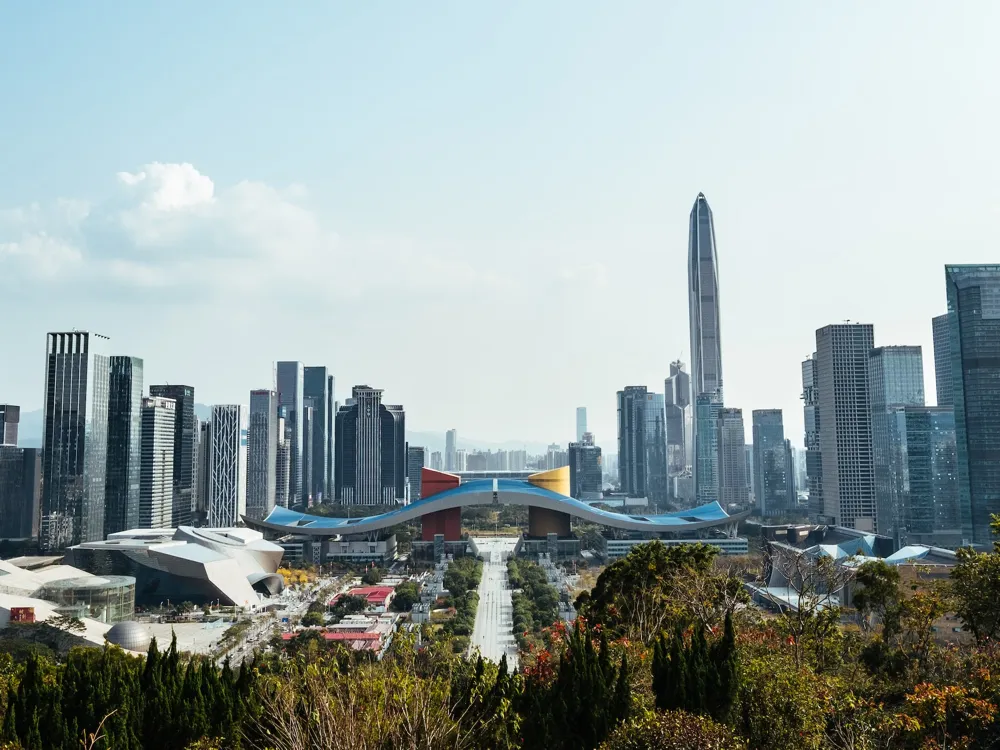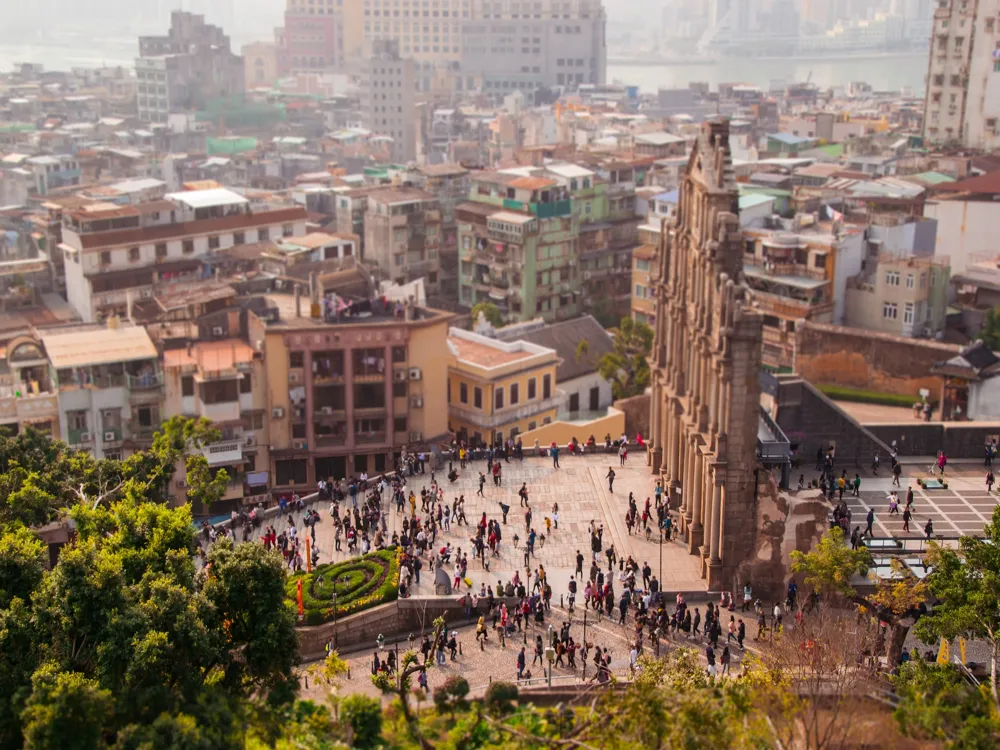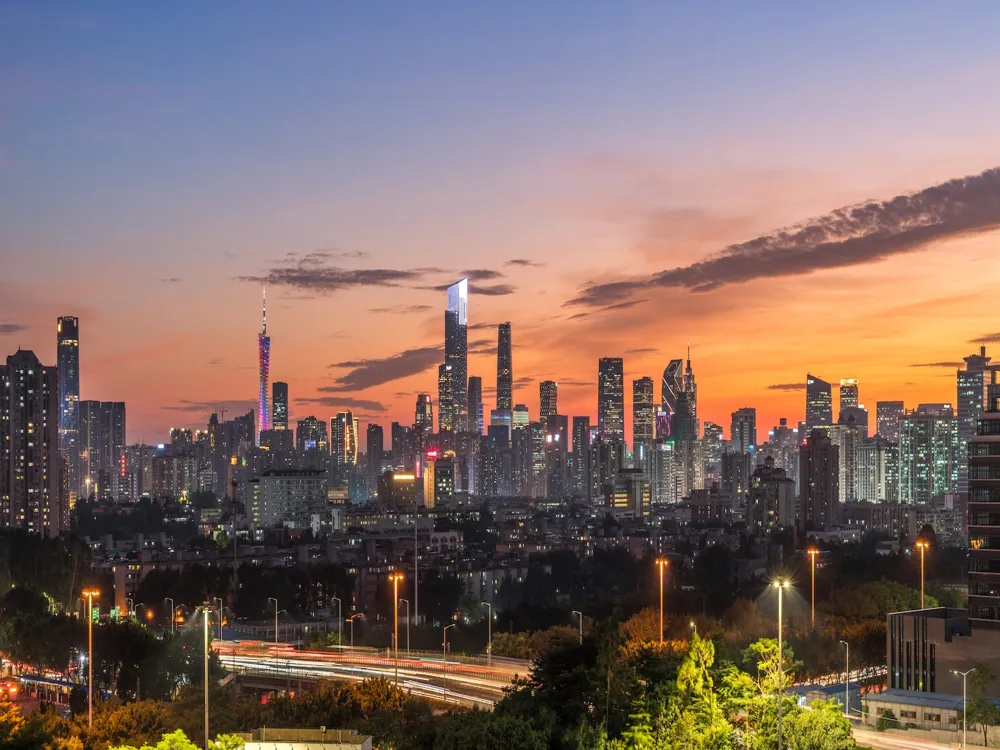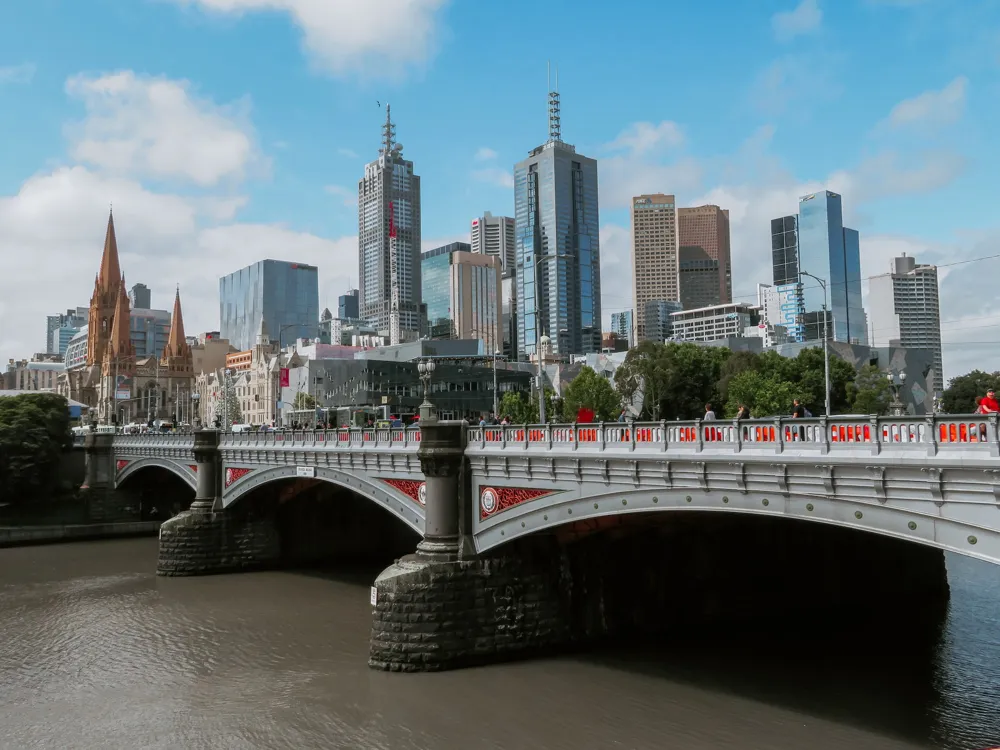The Central-Mid-Levels Escalator and Walkway System in Hong Kong is a remarkable piece of urban infrastructure and the longest outdoor covered escalator system in the world. Spanning approximately 800 meters in length and rising 135 meters through the steep terrain of Hong Kong Island, it was built in 1993. This impressive structure is not only a vital transportation link but also a significant architectural and cultural icon of the city. The system primarily serves to provide an efficient and easy means of transport between the Central and Mid-Levels districts, areas known for their high-density residential and commercial developments. Before its construction, the daily commute for residents was considerably challenging due to the steep, hilly terrain. Now, it significantly reduces travel time and has become an integral part of daily life for many locals. Aside from its practical purpose, the escalator system has played a pivotal role in transforming the areas it traverses. It has spurred the growth of numerous businesses, cafes, and retail outlets along its route, turning these areas into bustling, vibrant neighborhoods. It's not just a transportation facility; it's a social and cultural phenomenon, offering a unique perspective of the city's urban landscape and becoming a must-visit destination for tourists seeking an authentic Hong Kong experience. Operating from early morning until midnight, the system is designed to run downhill in the mornings and uphill for the rest of the day, catering to the flow of commuters. It consists of 20 escalators and three inclined moving walkways, interspersed with break-out points where passengers can exit to access adjacent streets and buildings. This design not only serves practical purposes but also encourages exploration of the surrounding areas, making it a unique blend of transport and tourism. The impact of the Central-Mid-Levels Escalator system on Hong Kong's urban development cannot be overstated. It is a testament to innovative urban planning and a symbol of the city's adaptability and ingenuity in solving complex urban challenges. As both a functional piece of infrastructure and a cultural landmark, it provides a fascinating insight into the daily rhythm of life in Hong Kong and the city's ever-evolving urban landscape. The architecture of the Central-Mid-Levels Escalators is a marvel of engineering and design, reflecting Hong Kong's innovative approach to urban space management. The system's design had to account for numerous technical and spatial challenges, given the varied and complex topography it traverses. It represents a seamless integration of functionality and urban aesthetics, a characteristic feature of Hong Kong's architectural identity. The escalator system is supported by a steel framework, with the escalators and walkways enclosed in a see-through, weather-proof shelter. This design not only protects users from the elements but also blends with the surrounding urban environment, providing an unobstructed view of the street scenes below. The transparent enclosure ensures that the escalator does not become an imposing structure, but rather a subtle addition to the cityscape. One of the most striking features of the architecture is its adaptability to the existing urban fabric. The system weaves through a mix of old and new buildings, integrating with the city's layout without causing significant disruptions. This integration is further evidenced in the way the escalators intersect with roads, pedestrian pathways, and buildings, providing direct access to various commercial and residential spaces. The design also prioritizes safety and accessibility. The escalators are equipped with safety features such as emergency stop buttons, anti-slip surfaces, and regular maintenance checks. The system is designed to be accessible to all, including those with mobility challenges, reflecting Hong Kong's commitment to inclusive urban design. The Central-Mid-Levels Escalators are not just a means of transportation; they are a dynamic architectural statement. The system's design speaks to the necessity of creative solutions in dense urban environments and stands as a testament to Hong Kong's forward-thinking approach to city planning. As an architectural piece, it harmonizes the demands of functionality, aesthetics, and urban connectivity, making it a noteworthy subject for those interested in urban design and architecture. To avoid crowds, the best time to visit the escalators is during weekday afternoons. Mornings usually see a rush of commuters, while evenings can also be quite busy. Weekends and public holidays are generally crowded throughout the day. The areas surrounding the escalators are filled with unique shops, cafes, and restaurants. Take time to explore these neighborhoods, such as SoHo and Lan Kwai Fong, which offer a mix of traditional and modern Hong Kong culture. Always stand on the right side of the escalator to allow others to pass on the left. Be aware of your surroundings, especially during busy times. The escalator system is accessible to those with mobility challenges, with lifts available at certain points. The escalators offer unique urban photography opportunities. For the best shots, visit during the early morning or late afternoon for softer light. Nighttime also presents a dynamic scene with the city lights. Respect the local culture and customs when exploring the areas around the escalators. This includes being mindful of noise levels, disposing of trash properly, and being courteous to residents and shop owners. Reaching the Central-Mid-Levels Escalators is straightforward, thanks to Hong Kong's efficient public transportation system. The nearest MTR (Mass Transit Railway) station is Central Station. From there, it's a short walk to the escalator's starting point at Queen's Road Central. Alternatively, numerous bus routes and taxis are available throughout the city that can take you close to the escalators. For tourists, it's advisable to get an Octopus card, a reusable contactless stored value smart card for making electronic payments in online or offline systems in Hong Kong. Read More:Overview of Central-Mid-Levels Escalators
Architecture of Central-Mid-Levels Escalators
Tips When Visiting Central-Mid-Levels Escalators
Best Time to Visit
Exploring the Surrounding Areas
Safety and Accessibility
Photography Tips
Cultural Etiquette
How To Reach Central-Mid-Levels Escalators
Central-Mid-Levels Escalators
Hong Kong
NaN onwards
View hong-kong Packages
Weather :
Tags : Landmark
Timings : 6:00 AM - 12:00 AM 6:00 AM - 10:00 AM the escalators travel downhill. Post 10:00 AM they switch directions and travel uphill till midnight
Time Required : Less than 1 hour
Planning a Trip? Ask Your Question
Hong-kong Travel Packages
View All Packages For Hong-kong
Top Hotel Collections for Hong-kong

Private Pool

Luxury Hotels

5-Star Hotels

Pet Friendly
Top Hotels Near Hong-kong
Other Top Ranking Places In Hong-kong
View All Places To Visit In hong-kong
View hong-kong Packages
Weather :
Tags : Landmark
Timings : 6:00 AM - 12:00 AM 6:00 AM - 10:00 AM the escalators travel downhill. Post 10:00 AM they switch directions and travel uphill till midnight
Time Required : Less than 1 hour
Planning a Trip? Ask Your Question
Hong-kong Travel Packages
View All Packages For Hong-kong
Top Hotel Collections for Hong-kong

Private Pool

Luxury Hotels

5-Star Hotels

Pet Friendly







